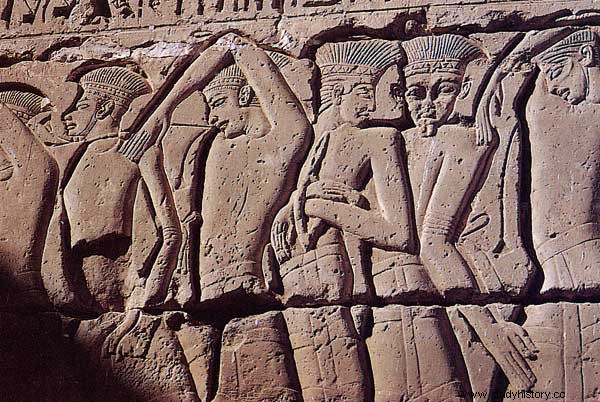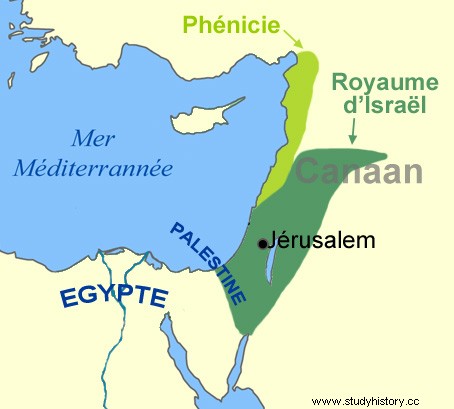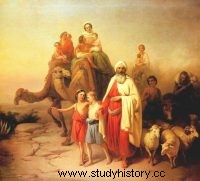
ABOUT 1,195 B.C. AD
Sea Peoples defeat the Hittite Empire:
The Sea Peoples probably come from Greece, the Greek islands and southwestern Anatolia. They look for new places to settle and they kill and destroy everything in their path. They invade Canaan (except Phoenicia) and the Hittite Empire collapses.
AROUND 1,190 B.C. AD
Sea Peoples attack Egypt:
The Egyptians triumph and after this defeat, the Peoples of the Sea disperse around the Mediterranean.
AROUND 1,150 B.C. AD
The Pelesets invade the lands of Canaan:
The Pelesets tribe comes from the Peoples of the Sea. The Pelesets are called Philistines in the Bible and they will later give their name to this part of the Middle East:Palestine.

AROUND 1020 B.C. AD
The Hebrews defend Canaan:
The Hebrews must defend their land from the Philistines. They choose a king, Saul, to lead the fight. In reality, the real hero is a warrior named David. The Bible tells how he killed the strongest of the Philistines with a stone thrown from a slingshot.
AROUND 1,000 B.C. AD
Assyrians begin to found the Assyrian Empire.
CIRCA 1000-928 B.C. AD
Reign of Hebrew King David:
David becomes king after Saul's death and defeats the Philistines. He unites the Hebrews in a single kingdom which takes the name of Israel . He conquers Jerusalem and makes it the capital of his kingdom.
CIRCA 965-928 BC. AD
Reign of Hebrew King Solomon:
Solomon becomes king on the death of his father David. He establishes trade links with other nations, mainly with the Phoenicians, and makes the wealth and power of Israel . He builds a great temple dedicated to his god, in Jerusalem .

TOWARDS 926 B.C. AD
The kingdom of Israel is divided into 2:
When Solomon died, quarrels broke out between the north and the south, and the country was divided into two kingdoms:Israel to the north and Judah to the south.
Learn more about the New Kingdom in Egypt and the Egyptians during antiquity.
Useful link:
Book: See the Bible , Understanding sacred stories, texts and symbols – Geohistory
